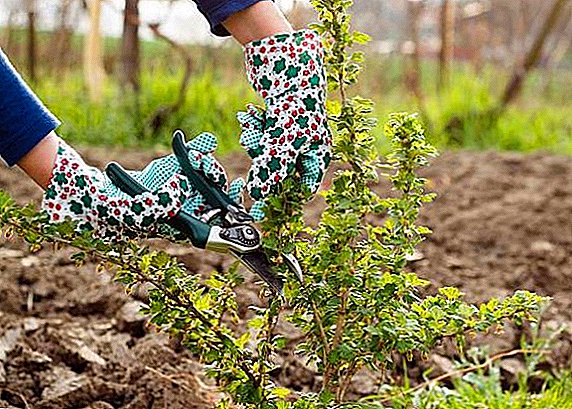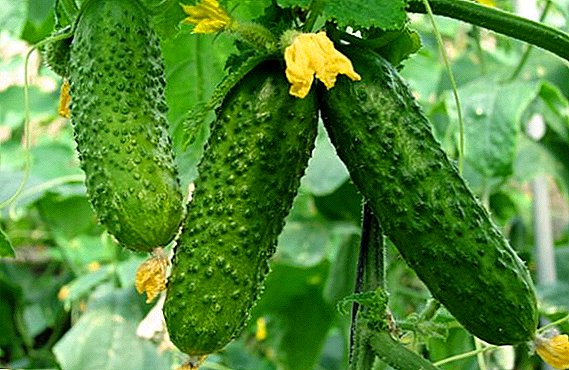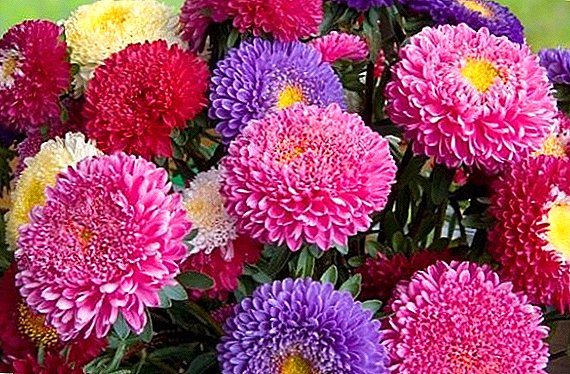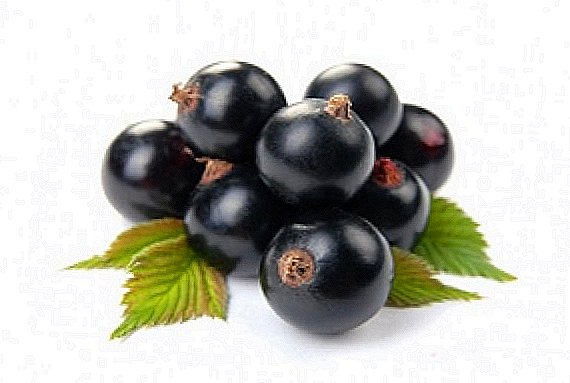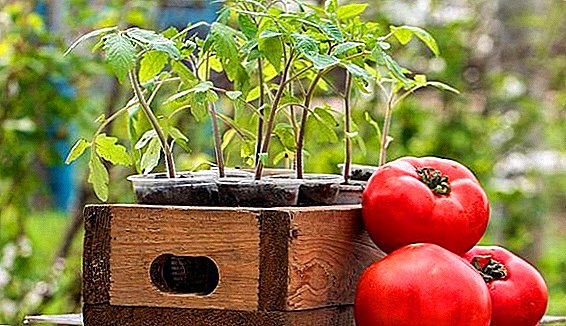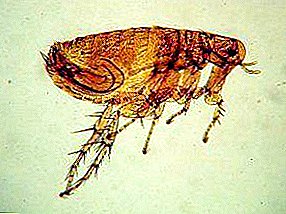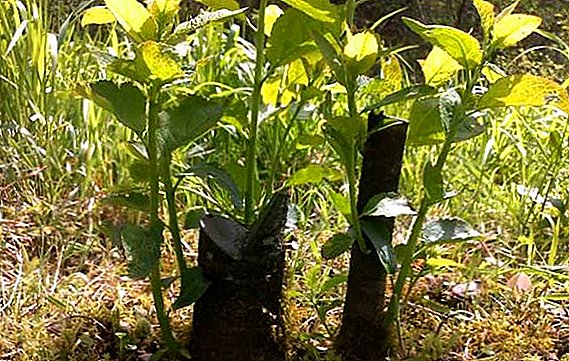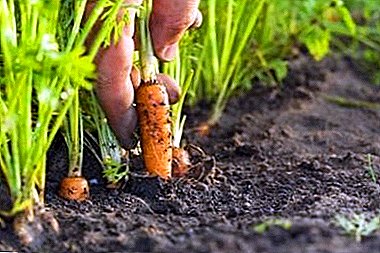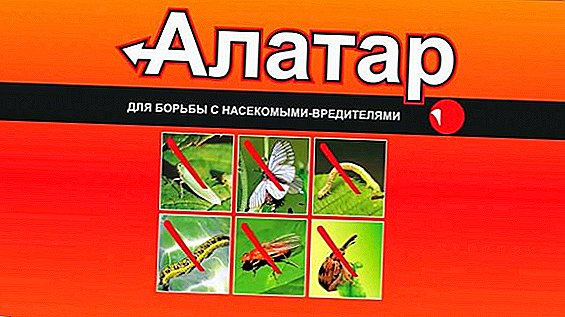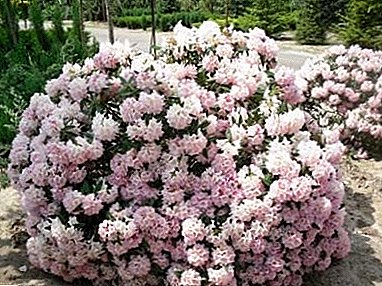
Rhododendron katevbinsky also known as multi-flowered azalea. This plant is not afraid of not only frost, but also environmental pollution. It is not surprising that with such persistence rhododendron can live up to 100 years. Azalea adorns the garden plots, being one of the most luxurious components of decorative groups and flower arrangements. It is also often planted along garden paths.
Characteristic and description
 Azalea Katevbinskaya is an evergreen shrub, one of the most vigorous and winter-hardy varieties. In the year he adds in height of 6-8 cm, an adult plant can reach 2-3 meters in height. Dark green leathery and shiny leaves also have impressive size - they grow up to 15 cm long. The barrel may be dark gray or have a brown tint.
Azalea Katevbinskaya is an evergreen shrub, one of the most vigorous and winter-hardy varieties. In the year he adds in height of 6-8 cm, an adult plant can reach 2-3 meters in height. Dark green leathery and shiny leaves also have impressive size - they grow up to 15 cm long. The barrel may be dark gray or have a brown tint.
The flowers look like wide (6 cm) bells of lilac or lilac color with a yellow-red pattern. In their inflorescence can be up to 20 pieces. Hybrid forms of azaleas Katevbinskoy boast crimson, purple, red, white, pink and blue flowers.
Azalea shallow root system - 30-40 cm. It develops mainly in litter and humus.
Types of rhododendron Katevbinsky
- Album (CatawbienseAlbum)
Pink buds of this species have the shape of a funnel and are marked with white, green or brown specks. Like all azalea flowers, they are odorless, but infest with inflorescences (13-20 flowers in each).
 - Grandiflorum (Catawbiense Grandiflorum)
- Grandiflorum (Catawbiense Grandiflorum)
One of the most common and reliable varieties. Its flowers, blooming in June, have a light-purple tinge with greenish spots, and the upper petals are decorated with a golden-brown pattern. The bush grows thick and powerful, a spreading crown of compact inflorescences crowns the trunk with dark gray bark.
- Bursault (CatawbienseBoursault)
The dark gray trunk of this rhododendron is crowned with a spreading crown of dense dark purple blossoms with greenish-yellow spots. The height of the shrub usually reaches one and a half to two meters.
- White (Catawbiense CunningamWhite)
Numerous white flowers of this species are decorated with yellow-green specks. It happens that it blooms twice in the summer. In case of freezing in winter, it is easily restored.
Rhododendron Katevbinskaya grandiflorum - planting and care
- landing
The best time to plant is spring. When purchasing seedlings, it is important to make the right choice: you need to choose the first option from your own rooted and grafted seedlings.
 Azalea - photophilous plant however, you should not choose an open place for it - from the direct rays of the sun the plant can burn. It is better to plant it in sheltered from the wind in the penumbra, for example, under the canopy of trees. Rhododendron loves water very much, so it will be useful before planting. put the seedling in the water.
Azalea - photophilous plant however, you should not choose an open place for it - from the direct rays of the sun the plant can burn. It is better to plant it in sheltered from the wind in the penumbra, for example, under the canopy of trees. Rhododendron loves water very much, so it will be useful before planting. put the seedling in the water.
At the place chosen for planting you need to dig a hole 50 x 70 cm. Root system does not need to be buried - it should rise 2-4 cm above the soil level, taking into account the subsequent subsidence.
Compulsory is an drainage layer of broken brick and sand, it should be at least 20 cm.
- ground
Rhododendron loves fertile, fresh, slightly acidic or acidic soil. It should be loose, enriched with organic matter. Peat and leafy ground mixed with sand and rotted pine sawdust will do. Good drainage and annual mulching with peat and pine needles are needed. They will retain moisture and protect the roots from weeds and damage.
 - watering
- watering
Azalea does not tolerate heat and dry weathertherefore, abundant and deep watering is necessary in summer. However, do not allow waterlogging and stagnation of water - his plant also can not stand. Twice or thrice a week it is recommended to water it with soft acidified water.
- fertilizer / dressing
It is recommended to feed young shrubs in early spring and after flowering. Adult plants are enough to fertilize once a season. The dose of top dressing is one bucket per root and includes rotted cow manure and decomposed compost.
It has a beneficial effect on the health of the plant and mineral fertilizers with NPK in a ratio of 2: 1: 1.5 (ammonium sulphate, superphosphate and potassium sulphate) - 30–40 g per square meter. It should also be added in spring; young plants should be given it in liquid form.
After flowering, you can fertilize a mixture of phosphorus and potash fertilizers (2: 1) - this will well affect the process of formation of buds next year. However, it is better not to postpone feeding at the end of summer and later, otherwise new shoots will grow that will freeze in winter.
Do not use fertilizers with lime, chlorine, do not overdo it with superphosphate.
 - bloom
- bloom
Rhododendron blooms in late May - early June and gladdens gardeners with bright colors for 3-4 weeks. The diameter of the lush crown with proper care of the plant, can reach two meters. After flowering, all wilted inflorescences must be removed so that they do not interfere with the formation of new buds.
- trimming
Pruning is not a mandatory procedure - it can retard growth and flowering. However, if you want to give the crown of rhododendron neatness, you can cut it in May. You can replace the trim by pinching.
- breeding methods
Katevbinsky rhododendron is grown from seeds that ripen in late October. They adapt well to local conditions, and the color of the resulting plants will vary. In this way, you can get multicolored flowers and make the flowerbed as diverse as possible.
 You can also propagate by rhododendron with semi-lignified shoots 7–9 cm long. They are cut in the middle of spring and in the middle of summer so that the cut is oblique. The 3 bottom sheets should be removed, leaving a tip of 0.5 cm, the remaining leaves should be cut half in length.
You can also propagate by rhododendron with semi-lignified shoots 7–9 cm long. They are cut in the middle of spring and in the middle of summer so that the cut is oblique. The 3 bottom sheets should be removed, leaving a tip of 0.5 cm, the remaining leaves should be cut half in length.
Planted shoots to be in a substrate of 3 cm coarse sand and 10 cm of coniferous soil. A drainage layer of 2-3 cm will be pebbles and broken shards.
Wintering rhododendron
 - autumn care - preparation for winter
- autumn care - preparation for winter
At the end of the summer, colloidal sulfur will be useful in the soil: it will slow down the growth of fungi and acidify the soil. It is also recommended to treat rhododendron with a fungicide against fungi. Continue watering until the ground freezes.
- how to hide rhododendron
In winter, it is necessary to protect the evergreen shrubs from the sun and wind. It is enough to shelter from sticks, boards or boxes. On top of all this you need to wrap non-woven material. If rhododendron grows in the shade, you can take a chance and leave it for the winter without shelter.
Do not forget about the mulch layer of pine needles and peat - it will reduce the depth of freezing of the earth
Diseases and pests
Rhododendrons growing in open areas, as well as depleted plants, which are cared for improperly, are more prone to diseases and pests.
 Due to excessive watering may develop fungal diseases. Infected plants need periodically spray solution of bordeaux mixture. Sick specimens and stumps will have to burn to destroy the centers of spread of fungi.
Due to excessive watering may develop fungal diseases. Infected plants need periodically spray solution of bordeaux mixture. Sick specimens and stumps will have to burn to destroy the centers of spread of fungi.
Among the insect pests are: striated weevil, spider mite, acacia loxer, tobacco trips, rhododendron mite, greenhouse and rhododendron whitefly. To fight them will help special insect repellents. Affected leaves must be plucked and burned; shoots must be cut off.
Also shrubs are subject to gastropod mollusks (they need to be harvested by hand, and in order to prevent it, they can use molluscicides) and crows, which eat up the kidneys (scarers for birds can help).
A florist rarely has difficulty growing a multi-flowered azalea. She is quite unpretentious, but very effective and can become a real queen of any flower garden.
A photo
More photos of azalea katevbinskoy see below:




Useful information
You can read other materials on the topic and learn more about azaleas / rhododendron:
- Azaleas or rhododendrons? Double names of numerous garden beauties
- Siberian Rhododendron Dahurian in your garden
- Evergreen Rhododendron Yakushiman
- How to protect the garden hydrangea from diseases and pests?
- Application of azalea / rhododendron in homeopathy


